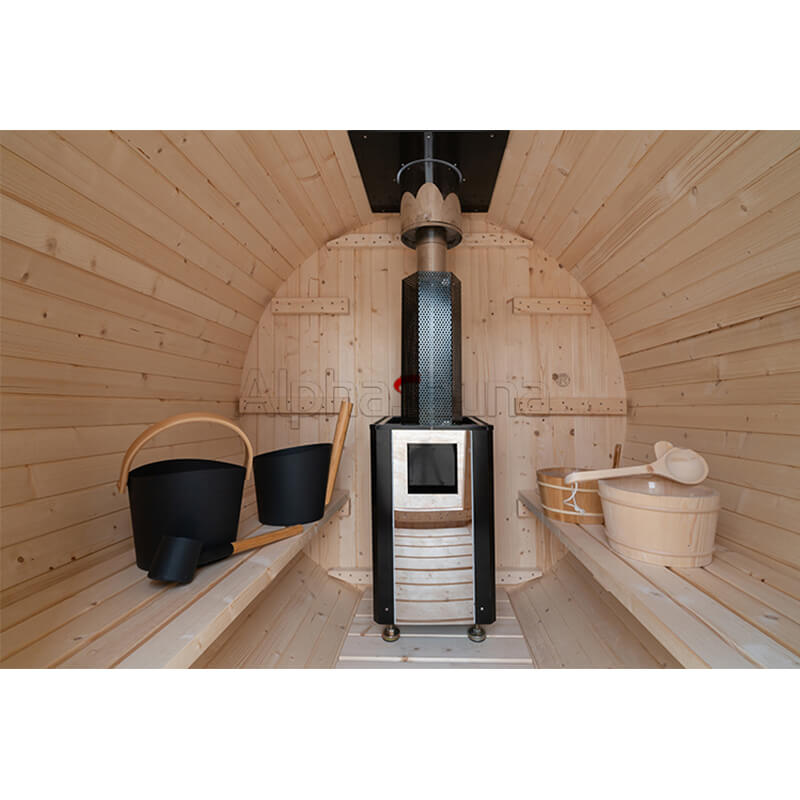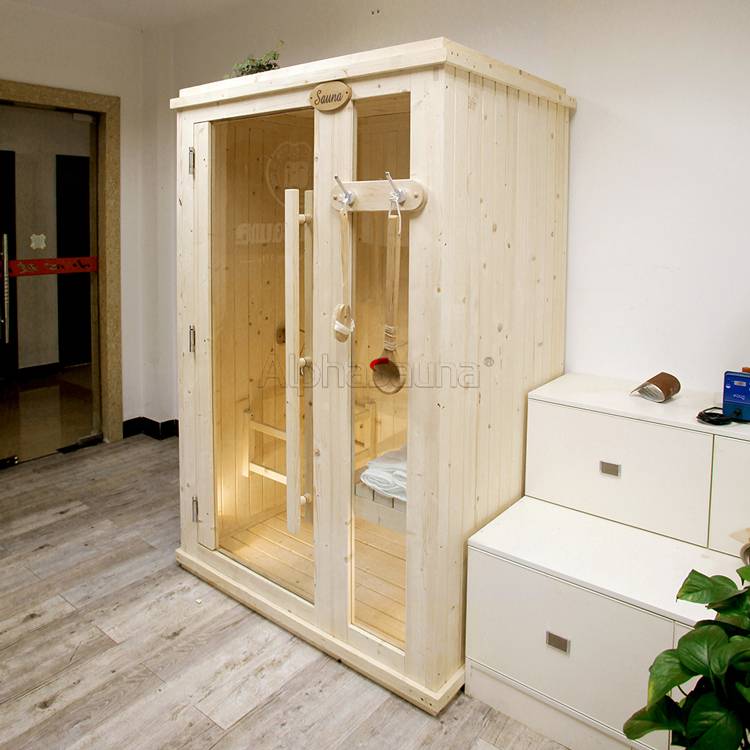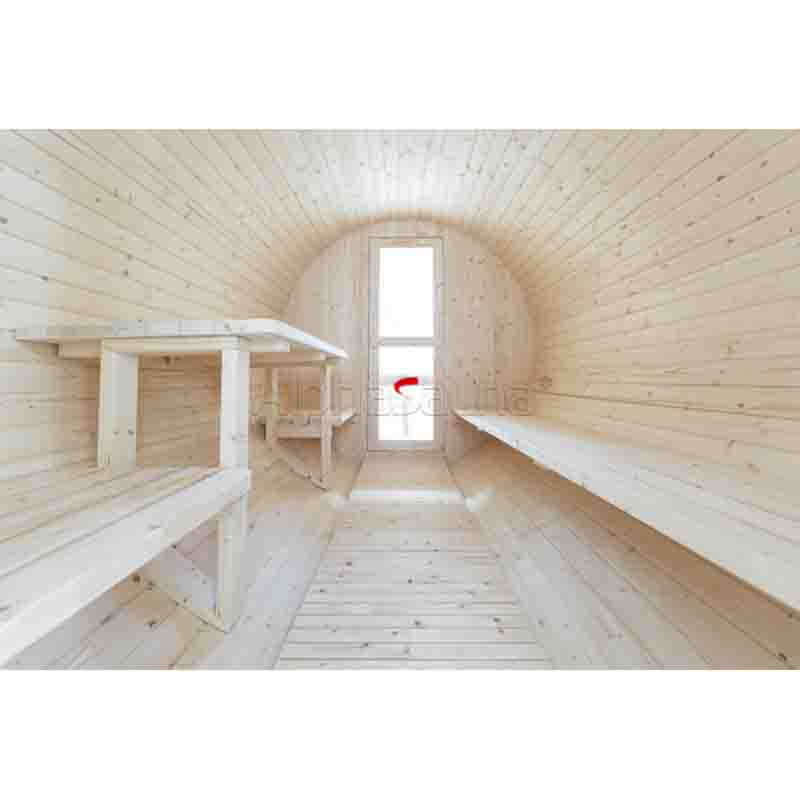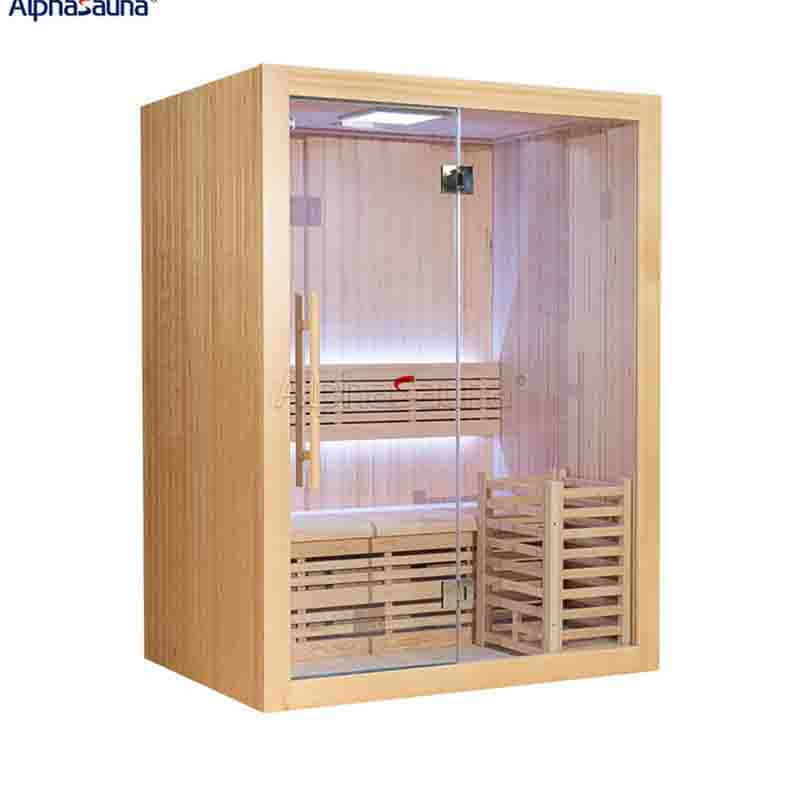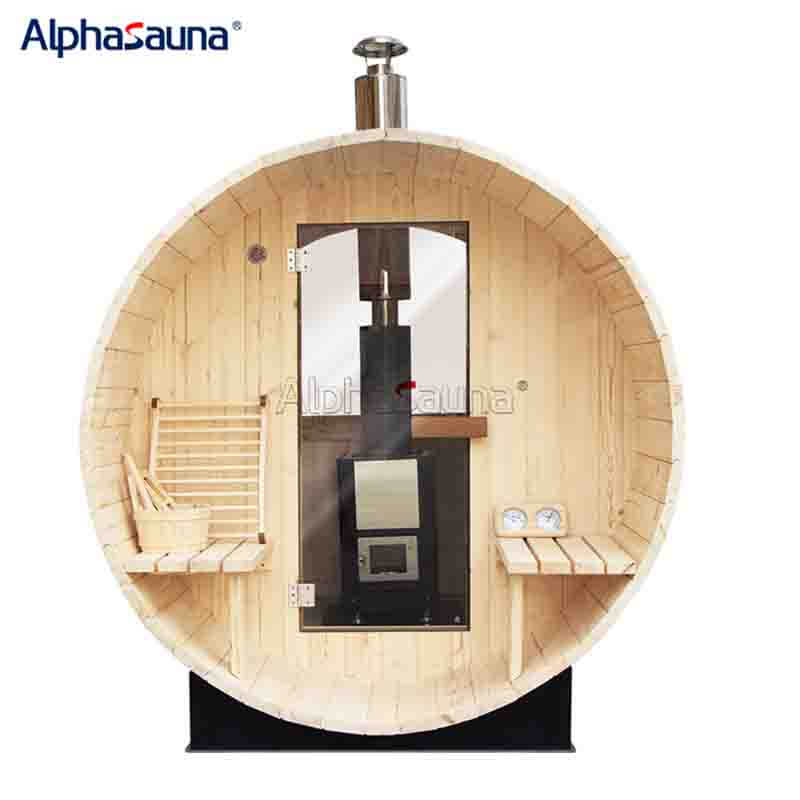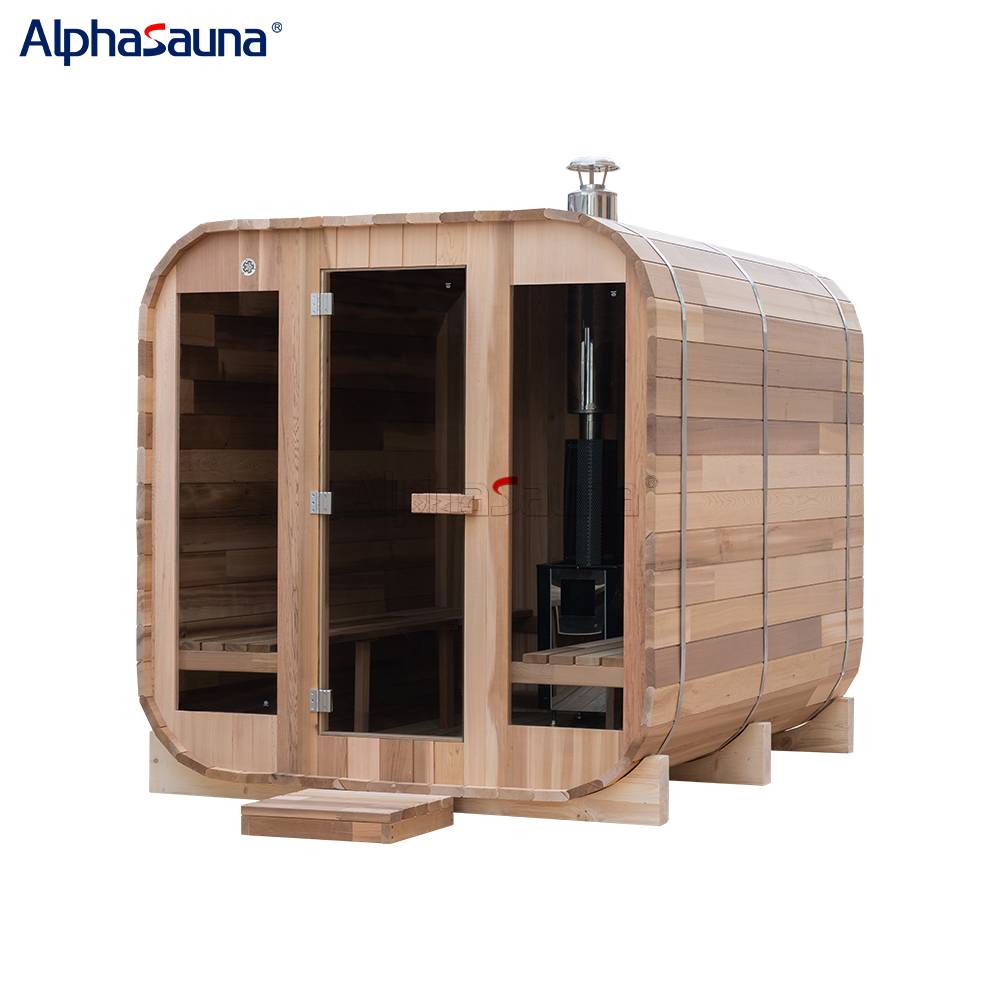ALPHA SAUNA & SWIMMING POOL SUPPLIER CO.,LTD
Sauna Revealed: The Secrets of Sauna Construction
Sauna Revealed: The Secrets of Sauna Construction
As people's living standards improve, their awareness and emphasis on health have been growing. They are seeking activities that can bring health
benefits to their bodies, and sauna, as a form of thermal therapy, has gained popularity among many.
Dating back to ancient times, people in the Nordic regions started using saunas to relieve bodily fatigue and pain. With the spread of sauna culture,
more and more people have come to understand and embrace sauna. Due to its potential health benefits, sauna has found wide applications in the
fields of health and medicine. However, the marvelous design and structure behind saunas are often not deeply understood by many. A sauna is not
merely a simple room; it is the result of meticulous design and clever construction. This article aims to unveil the mysteries behind the construction of saunas.
Why are saunas made of wood?
The reason why saunas are made of wood is because wood possesses properties that are highly suitable for sauna construction, providing a safe,
comfortable, and effective sauna experience. Here are some characteristics of wood:
1. Heat resistance: Wood has excellent heat resistance, able to withstand the high temperatures and humidity of saunas without easily deforming, ensuring stability.
2. Thermal conductivity: Wood has relatively low thermal conductivity, preventing heat from being transferred to the exterior, maintaining sauna temperature without loss.
3. Environmental friendliness: Some types of wood are renewable materials, contributing to environmental sustainability. Compared to other materials
like plastic or metal, wood is more environmentally friendly, reducing environmental impact.
4. Ease of processing: Wood is easier to cut and process compared to metals or glass, allowing for customization in various shapes and sizes, facilitating
the creation of different styles and sizes of saunas.
5. Appearance: Wood construction enhances the aesthetic appeal of saunas, especially when placed outdoors, blending well with nature and creating a
comfortable and atmospheric sauna experience. Some types of wood also emit a pleasant scent, enhancing the sauna experience.
In summary, the widespread use of wood in sauna construction is mainly due to its ability to meet the requirements of comfort, heat resistance, aesthetics,
and environmental friendliness, creating a sauna that is simple, environmentally friendly, and aesthetically pleasing.
What structures are used to build a sauna?
The main structure of sauna construction consists of the following six aspects. Let's take a look at the composition of these structures:
1. Frame: A sauna requires a frame to determine its size and structure, ensuring stability. Typically constructed from wooden boards.
2.Walls: Sauna walls are usually constructed using insulation materials such as wood, concrete, fiberglass, etc., to prevent heat loss and
maintain a comfortable temperature inside.
3. Roof: The sauna roof is typically sloped or covered with asphalt shingles to facilitate drainage and prevent water from penetrating the interior.
It may be constructed from materials like wood or metal that can withstand high temperatures.
4. Doors and Windows: Sauna doors and windows typically use materials with good sealing properties to prevent heat loss.
5. Heating Elements: Different types of saunas utilize different heating methods, so the heating elements they are equipped with vary. Common
heaters include sauna stoves, sauna stones, infrared heaters, steam generators, etc., to create different sauna environments.
6. Ventilation System: Some saunas are equipped with ventilation systems to ensure air circulation and keep the air fresh.
These are the main aspects of sauna construction. Sauna construction is not simple; it combines many structures to maximize the comfort and
ambiance of the sauna experience. It is the culmination of precise design and unique structures.
Frequently Asked Questions about Sauna Construction Structure
1、how to build a sauna door
Sauna doors are an important component of a sauna room because they not only provide access to and from the sauna, but also play a role in
ensuring that heat does not escape from the sauna room, thus maintaining a comfortable temperature inside. The construction of a
sauna door can be guided by the following steps:
(1)Materials: Sauna doors are typically made of materials with good heat resistance and moisture resistance, such as wood, fiberglass,
or stainless steel, which can withstand the high temperature and humidity environment inside the sauna room.
(2)Size: Determine the appropriate size of the sauna door based on the dimensions of the sauna room to ensure it fits properly and
prevents heat and humidity loss during sauna sessions.
(3)Door Frame: Customize a suitable door frame according to the measured dimensions to ensure stability and strength.
(4)Door Lock: Install a suitable door lock on the sauna door to ensure it can be securely locked, enhancing safety during sauna sessions.
(5)Sealing: A sauna door with good sealing properties can prevent heat and moisture loss, so ensure the sauna door can be fully sealed.
(6)Testing: After construction, the sauna door needs to be tested to ensure proper installation before use. Any minor issues can be adjusted,
but serious issues may require reinstalling or seeking assistance from professionals.
These are the basic steps for constructing a sauna door. Depending on the requirements and personal preferences for the sauna room,
it can be designed and customized to create a sauna door that is durable, safe, sturdy, and aesthetically pleasing.
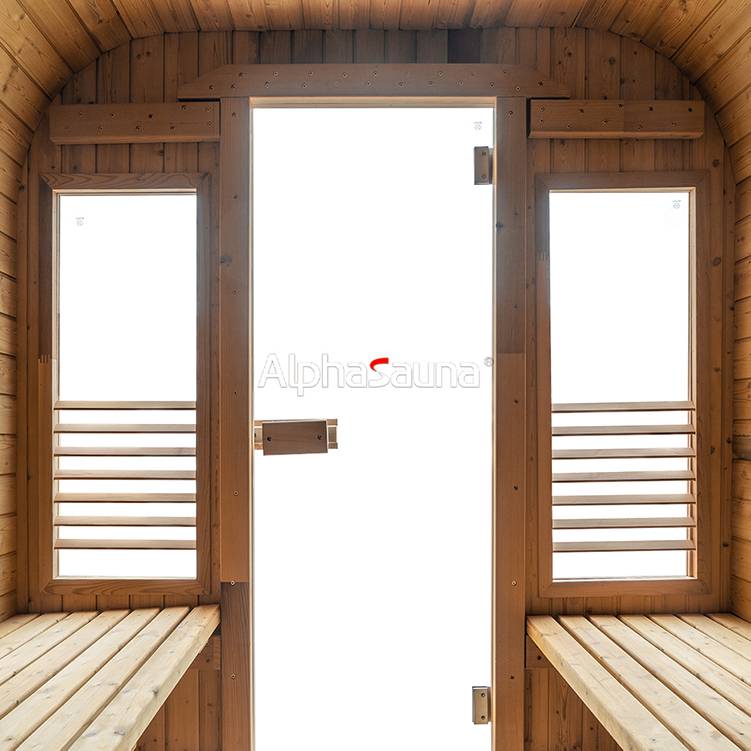
2、how to build sauna benches
Constructing a sauna bench is relatively easier compared to a sauna door, as it does not require various functional properties like a sauna door.
The construction of a sauna bench begins by selecting suitable materials, typically using wood with good heat resistance and moisture resistance.
Then, based on the size of the sauna room and personal preferences, the dimensions and shape of the sauna bench are designed. Next, assembly
is carried out, ensuring the stability and sturdiness of the bench. Once assembled, the bench can be sanded and painted to ensure a smooth
surface and prevent skin abrasions. Finally, the sauna bench is fixed in the appropriate position. By completing these steps,
the construction of the sauna bench is essentially finished.
Benefits of using wooden saunas
Wood possesses excellent heat resistance, moisture resistance, insulation, aesthetics, safety, stability, and other qualities. A wooden sauna room
can provide a comfortable, relaxing, and safe sauna environment. The reason why Alpha Sauna chooses wood to construct sauna rooms is because
of an understanding and awareness of the characteristics of wood, and wooden sauna rooms are convenient to assemble. Alpha Sauna's wooden sauna
rooms are made of various high-quality woods, such as pine, cedar, spruce, hemlock, and thermally treated wood. These woods also have good
moisture resistance, aesthetics, and a subtle fragrance reminiscent of nature, providing users with a sense of being surrounded by nature.
Alpha Sauna offers a wide variety of wooden sauna room types to provide users with diversified choices.

